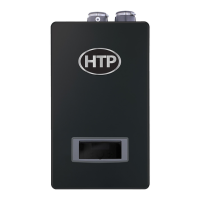Check with your local Authority Having Jurisdiction for requirements when installing appliance in a garage or closet. Please read the
entire manual before attempting installation. Failure to properly take factors such as venting, piping, condensate removal, and wiring
into account before installation could result in wasted time, money, and possible property damage and personal injury.
PRECAUTIONS
If the appliance is located in a residential garage, it should be installed per the latest edition of the National Fuel Gas Code, ANSI
Z223.1, and CGA-B149 Installation Code in Canada.
• Mount the bottom of the appliance a minimum of 18” above the floor of the garage, to ensure the burner and ignition devices
are well off the floor.
• Locate or protect the appliance so it cannot be damaged by a moving vehicle.
The space must be provided with correctly sized combustion/ventilation air openings for all other appliances located in the space with
the appliance. For power venting installations using room air for combustion, refer to the venting section, this manual, for descriptions of
confined and unconfined spaces. Do not install the appliance in an attic. Failure to comply with these warnings could result in
substantial property damage, severe personal injury, or death.
NOTE: To prevent combustion air contamination, see Table 9 in this section when considering exhaust vent and intake pipe
termination.
The appliance is rated ANSI Z21.13 Category IV (pressurized vent, likely to form condensate in the vent), and requires a special vent
system designed for pressurized venting.
Exhaust vent and intake pipe may be vented vertically through the roof or out a side wall. Venting methods are detailed in the Venting
Section. Do not attempt installation using any other means. Be sure to locate the appliance so exhaust vent and intake piping can be
routed through the building and properly terminated. Exhaust vent and intake piping lengths, routing, and termination method must
comply with methods and limits given in the venting section.
G. CARBON MONOXIDE DETECTORS
In the Commonwealth of Massachusetts and As Required by State and Local Codes
Installation of Carbon Monoxide Detectors: At the time of installation or replacement of the vented gas fueled appliance, the installing
plumber or gas fitter shall observe that a hard wired carbon monoxide detector with an alarm and battery back-up is installed on the
floor level where the gas appliance is installed, unless the appliance is located in a detached, uninhabitable structure separate from the
dwelling, building, or structure used in whole or in part for residential purposes.
In addition, the installing plumber or gas fitter shall observe that a hard wired carbon monoxide detector with an alarm and battery back-
up is installed on each additional level of the dwelling, building, or structure served by the vented gas appliance. It shall be the
responsibility of the property owner to secure the service of qualified licensed professionals for the installation of hard wired carbon
monoxide detectors.
a. In the event that the vented gas fueled appliance is installed in a crawl space or attic, the hard wired carbon monoxide detector
with alarm and battery back-up shall be installed on the next adjacent floor level.
b. In the event that these requirements cannot be met at the time of completion of installation, the owner shall have a period of
thirty (30) days to comply with the above requirements; provided, however, that during said thirty (30) day period, a battery
operated carbon monoxide detector with an alarm shall be installed.

